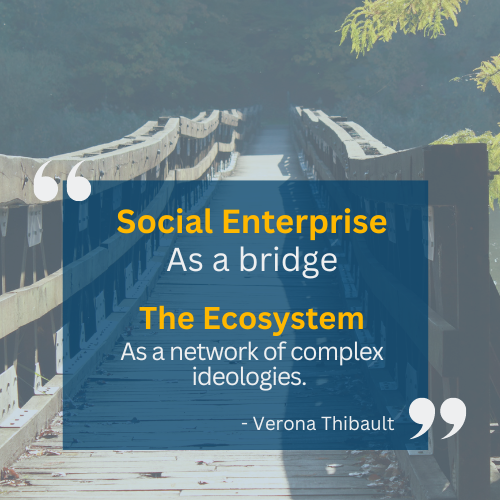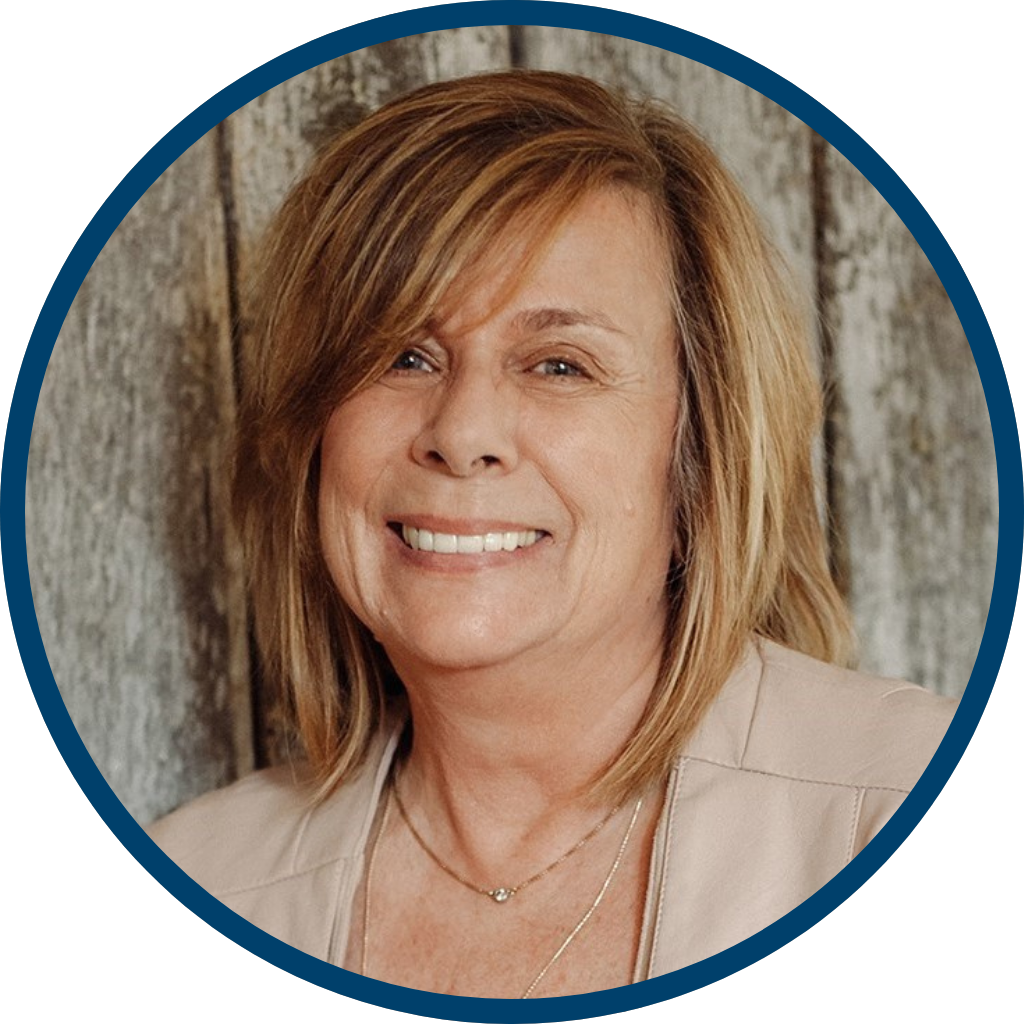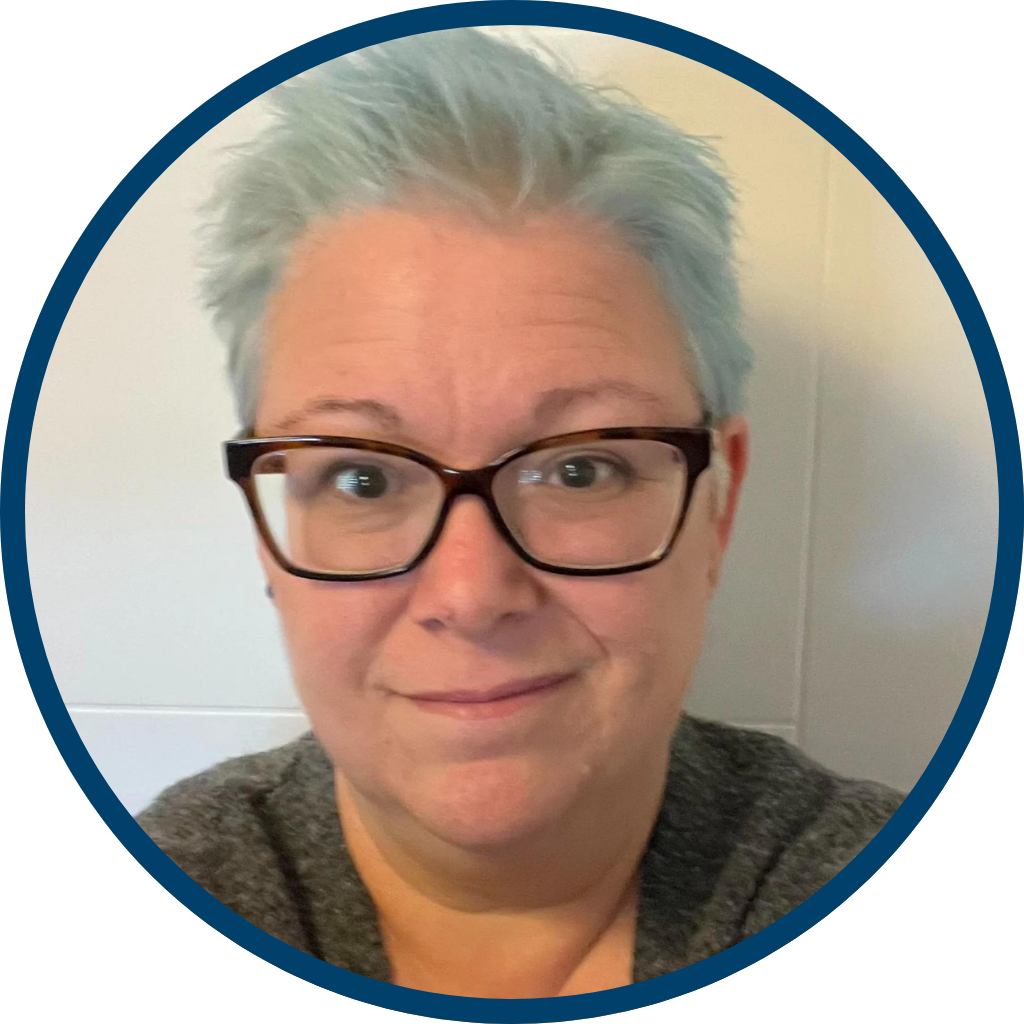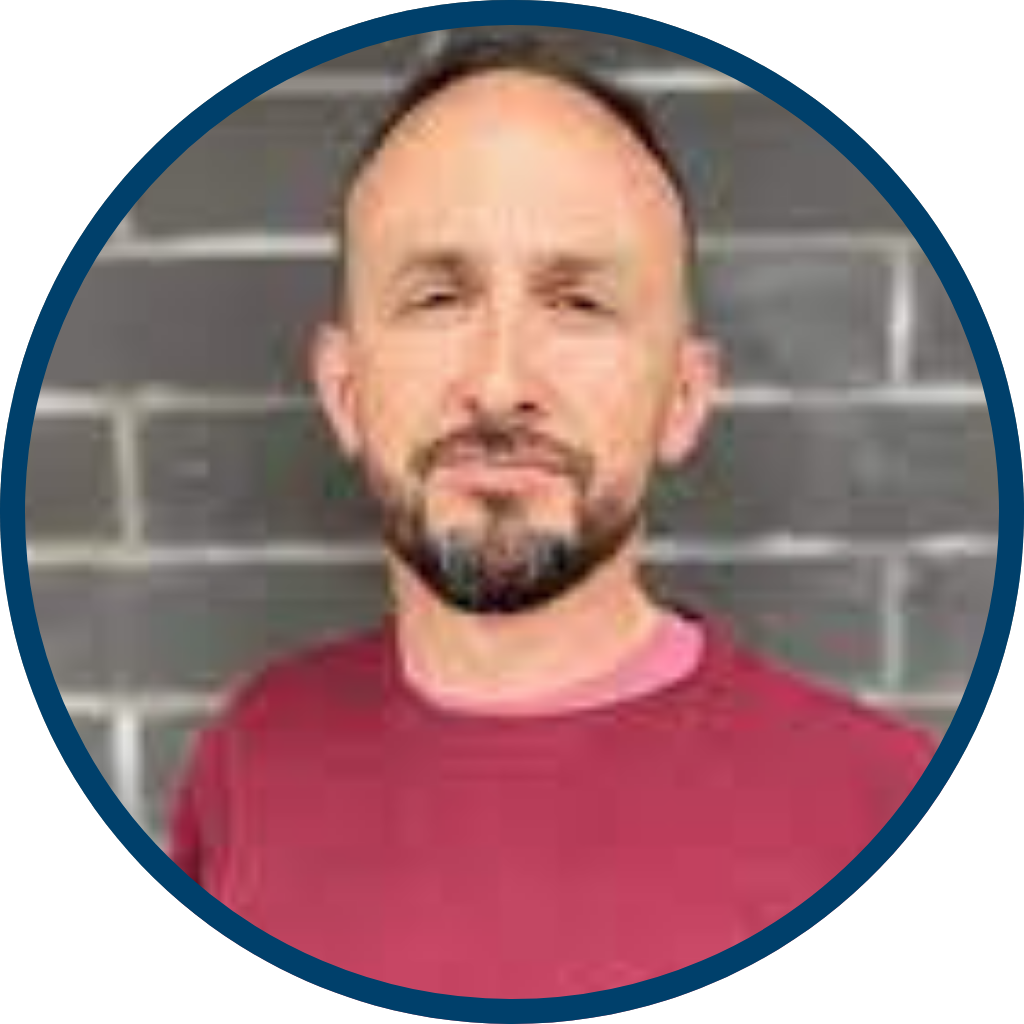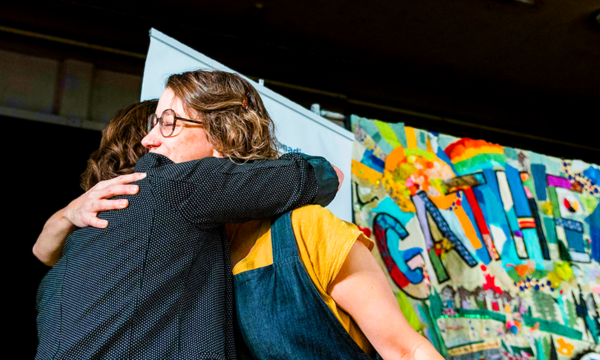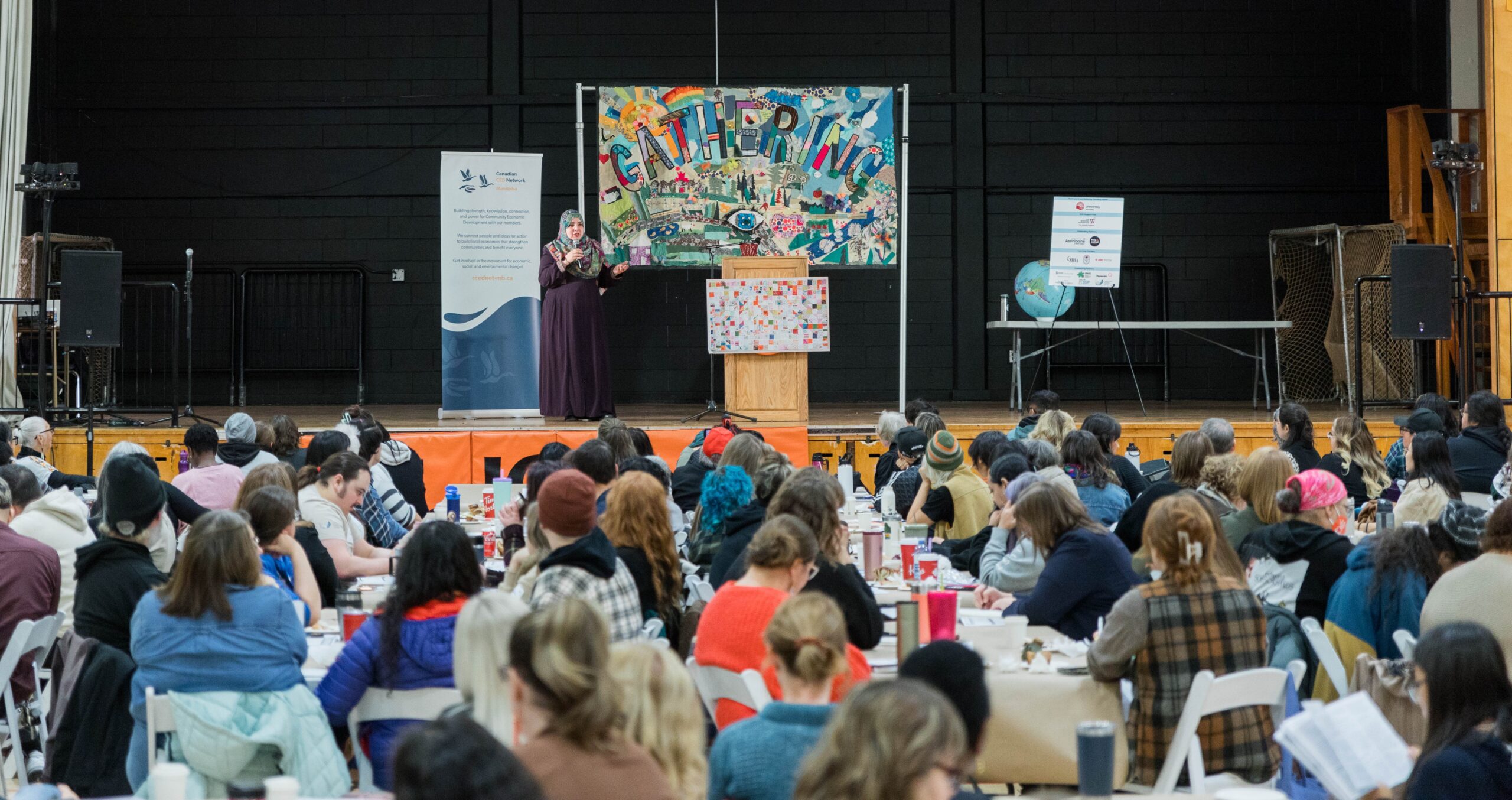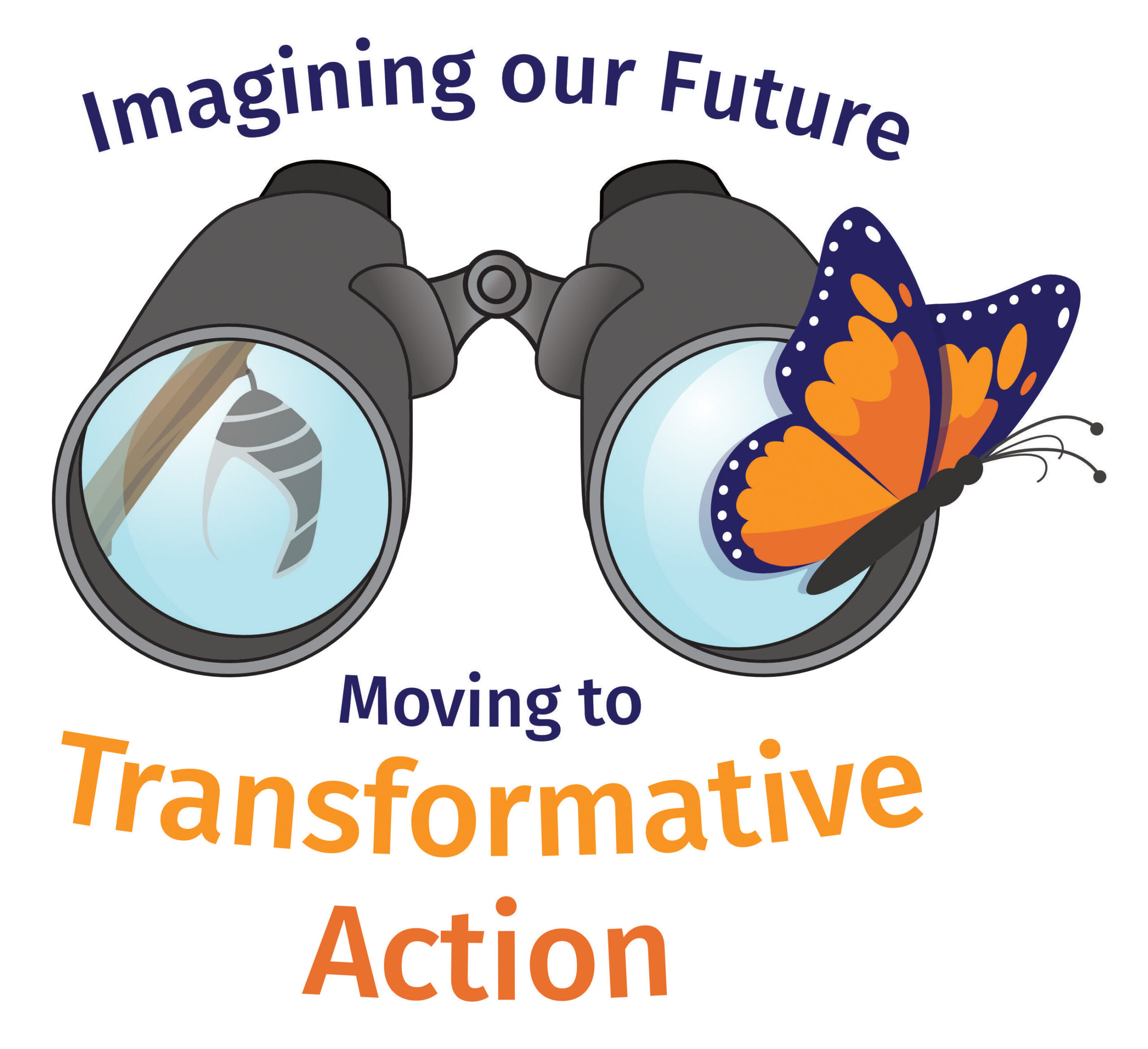This is Part 2 of our Ecosystem Building Blog Series.
Read Part 1 – Atlantic Ecosystem Building: Interview with Chelsey MacNeil
Read Part 3 – Weaving together small regional networks in Ontario: An ecosystem building story
Stay tuned throughout the winter for the rest of the series! Ecosystem building is a core focus of CCEDNet’s Regional Initiatives Program.
“On the Cusp of Change”:
Laying the groundwork for the future through collaboration
How SEDA and the Saskatchewan Social Enterprise Hub are promoting a Social Enterprise Ecosystem in Saskatchewan
Interview With
Verona
Thibault
SEDA
Colleen
Christopherson- Cote
Toby
Esterby
Sarah
Leeson-Klym
CCEDNeet
Interviewer and Editor:
Melissa Sinfield, Regional Initiatives Manager
Blog Summary
Read this if you are:
- Trying to define ecosystem building.
- Questioning the value of ecosystem building
- Struggling to distinguish ecosystem building work from other community development work.
- Struggling with scarcity in your region.
- Witnessing the criminalization of underemployed and labour class folks in your region.
- Interested in the dynamics of prairies on network building.
Blog Notes
Region: Saskatchewan
We spoke with Verona, Colleen, and Toby who are working on a collaborative ecosystem building project hosted by Saskatchewan Economic Development Alliance (SEDA) and the newly formed Saskatchewan Social Enterprise Hub. The project includes a province-wide Social Enterprise Needs Assessment and Ecosystem Engagement that promote business models that transcend public, private and non-profit sectors. This project is supported by CCEDNet’s Regional Initiatives Program.
Joined by Sarah Leeson-Klym, Director of Regional and Strategic Initiatives, all five of us discussed ecosystem building in Saskatchewan.
Note: interview has been edited for length and clarity.
Promoting a Social Enterprise Ecosystem in Saskatchewan
Melissa: What is ecosystem building to you?
Verona: In Saskatchewan (SK), in an ideal world, we would be engaging all these different networks in a common direction, which is not easy to do.
Toby: In the SK context, all of us have way too many hats on. Ecosystem work can easily end up morphing back into basic community development. We are trying to find ways to mirror our ecosystem building work with the conventional community development people are familiar with. Little regional ecosystems are starting to stand up themselves, and you can see it developing in urban centers by process of scarcity: housing, health, food. The dream is where, instead of community coming together in response to scarcity, the ecosystem is strong enough to encourage community support all along the way.
Sarah: Who are the networkers, are they based on community groups? What are the different sectors?
Verona: I am interested in building regional ecosystems [throughout SK] that include industries, governments, and non-governmental sectors. I just came back from a small country that has the strongest ecosystem, but it is not transferable. In this context [of SK], social enterprise can be embedded in so many sectors that the community sector could be robust. Everyone should be part of the hub, everyone could engage.
Colleen: I might be the only one who is slightly optimistic here. I don’t think it is impossible to build complex ecosystems, it is just unique here to SK. With the standard definition of ecosystem: “Ecosystem, the complex of living organisms, their physical environment, and all their interrelationships in a particular unit of space.” (Britannica) By the very definition there is a strict relationship here – a set of rules. While community developers aren’t necessarily utilizing the definition in the same way as a biologist, we are relying on the rules and relationships that are embedded in the interconnectedness of people (living component) and public policy/programmatic response (non living component). Factoring in the final part of the definition – in a particular unit of space – means that these interconnected pieces are impacted by things like geography, time of year, or political landscape.
“
While community developers aren’t necessarily utilizing the definition [of ecosystems] in the same way as a biologist, we are relying on the rules and relationships that are embedded in the interconnectedness of people (living component) and public policy/programmatic response (non living component).
“
“
Ecosystem building is not a reactionary process, it is a long term investment designed to address outcomes.
“
In Saskatchewan, building complex ecosystems to respond to these interconnected and complicated needs is sometimes difficult. Oftentimes, relationships are emerging and trust isn’t forged. It takes time to build these systems and for those who are working in time sensitive sectors it can feel like the process is delaying actions. However, it is critical that the foundation is built and that the people involved understand the complexity of the system, create common language and set achievable goals together. Ecosystem building is not a reactionary process, it is a long term investment designed to address outcomes.
Colleen: All of the governance that I am in is embedded in this. How do you implement a collective impact? We don’t use the same language, but trying to figure out what that commonality is. Complex ecosystem work needs a collective impact framework. Understanding the common agenda, and coming to consensus about the language and commitments to that common agenda is a critical first step. Then any other baggage not directly connected to the common agenda being worked on, needs to be parked at the door. It’s not that the other work or issues aren’t important, but they aren’t part of this work, so allowing it at the table hinders the capacity to work on the common agenda work.
Sarah: Is that why social procurement features in your hub model? It’s a tangible thing that people can work with and find commonality in?
“
Understanding the common agenda, and coming to consensus about the language and commitments to that common agenda is a critical first step.
“
Colleen: Yes, that’s it. It’s tangible, it makes sense to folks. People need to buy coffee and they think ‘oh why would we buy coffee with Walmart when I could buy it from this social enterprise.’’
Structural problems sparking ecosystem building
Melissa: What was the spark that ignited this project you are working on?
Verona: Wouldn’t call it a spark. It was a long slow burn. A funding opportunity came up. The spark came out of the frustration from it. There was so much confusion around the funding. Total frustration over confusion and lack of social enterprise development.
”
When I talk to other regions that already had some ecosystem building in place, their network connections made sure the funding advisory committees were aware of the field,
whereas in regions where that ecosystem did not exist there were fractious experiences.
“
Sarah: Was part of that frustration, because there is not always enough built to pull everyone together? You kind of know everyone in regions like SK but you’re not in charge.
Verona: There were a couple [organizations] who [qualified but didn’t get funding] and didn’t apply again because it was so difficult to apply the first time.
Sarah: When I talk to other regions that already had some ecosystem building in place, their network connections made sure the funding advisory committees were aware of the field, whereas in regions where that ecosystem did not exist there were fractious experiences.
Coleen: Are we still talking about the spark?
Melissa: We can be if you have more to add!
Colleen: As part of the Saskatoon poverty reduction work, social enterprise has been identified as a critical component. What we saw during COVID was how people supplement their incomes, particularly when they are underemployed, or connected to income supports. The reality is, that so many of us have “side gigs” and if you aren’t living in poverty, these lead to increased wealth and stability. When you live in poverty, and are connected to social services, side gigs are not wealth generating, and sometimes can lead to legal implications for the folks on assistance. Heaven forbid a person who is on income assistance is spotted selling something on Facebook by their case worker. They could then be penalized (with clawbacks) or even criminalized (reported as fraud) for it. This is a real problem. It led us to think – how can we build social enterprise models that support folks, create space to lift them out of poverty and build capacity for social procurement from these enterprises?
Toby: Maybe we should have a podcast about this!
“On the Cusp of Change”: Laying the groundwork for the future
Melissa: What are some of the unique dynamics of ecosystem building in SK?
Toby: I think in SK we are on the cusp of change. I see systemic change coming. So in ecosystem building there are new voices all the time coming to the forefront. Sarah, what you mentioned [about how] everyone knows everyone, what I am noticing is that there are new names coming up, that is coinciding with data points. We are now getting to the point where you can hold them out and people are going ‘oh, that’s not good. That’s not right.” We are getting to that point where a little bit of change is on the way. We are not there yet, but ecosystem building puts this into a unique perspective. It is laying the groundwork for something happening in the future.
Verona: You are seeing this in the rural communities too?
Toby: A bit. People are getting sick of the ways things are, every time people get sick of the status quo you see this start to shift in these situations.
“
I think in SK we are on the cusp of change… We are not there yet, but ecosystem building puts this into a unique perspective. It is laying the groundwork for something happening in the future.
“
“
[With an established ecosystem]… [people] already have a bit of a sense of what they want to do… and when… an opportunity, comes available they are ready to strike at that moment.
“
Sarah: In Manitoba, that is what I find is one of the things we do that is just so valuable. The routine of keeping people together in regular member meetings through so much change, politically and socially, means the field comes together a little bit more easily in hard times or for opportunities. They already have a bit of a sense of what they want to do and each others’ approaches, and when something, an opportunity, comes available they are ready to strike at that moment.
Toby: What I am seeing is people with affluence coming to the table with more than just money. They are coming to the table saying okay here is my money and then rolling up their sleeves and saying ‘okay how can we get engaged?’ They are seeing they can engage.
Summing Up
by Verona Thibault
“Social enterprise as a bridge
The ecosystem as a network of complex ideologies. “
“Either the ideologies
are at conflict, or not.”
“Need the ecosystem
to create the ingenuity
that transforms economies.“
– Verona Thibault
Thank you Verona, Colleen, and Toby for sharing your insights and experiences with ecosystem building in SK!

